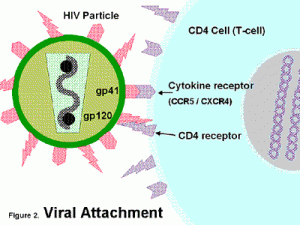In 1984, Human immunodeficiency virus (HIV) was discovered by a team led by Dr. Roberto Gallo, which opened the gates for mankind in order to gain more knowledge about this deadly incurable disease which was the reason for the deaths of millions of people. As the director of the Institute of Human Virology (IHV), Dr. Roberto Gallo is now launching the institute’s first clinical trial of a vaccine for AIDS – a project that has been 15 years in the making.
HIV is one of a group of atypical viruses called retroviruses that maintain their genetic information in the form of ribonucleic acid (RNA). HIV virus has an enzyme known as reverse transcriptase, which makes it capable of producing deoxyribonucleic acid (DNA) from RNA, whereas most cells carry out the opposite process, transcribing RNA from DNA. The activity of the enzyme enables the genetic information of HIV to become integrated permanently into the genome (chromosomes) of a host cell. Since HIV virus controls the genetic information of the cell, it makes the cell produce more HIV virus using the host machinery, thus replicating at a fast rate. With HIV’s inherent ability to rapidly mutate and escape the immune system, conceiving an effective vaccine against it has been a seemingly difficult challenge.
It is found that when HIV infects a person, its surface protein called gp120 attached itself to another protein called the CD4 receptor, which is found in the white blood cells. When it binds to CD4 cell, it can change shape to avoid recognition from neutralizing antibodies which is the usual immune response form the body. This conformational change allows it to bind to a second receptor called a co-receptor, on CD4 cell surface. Once it has a grip on both HIV envelope protein fuses with the cell membrane, thus once within the cell, HIV is safe from attacks from antibodies.
The experimental AIDS vaccine, called as “Full length single chain” vaccine contains an HIV surface protein gp120, engineered to link to a few portions of the CD4 receptor. The main aim is to trigger antibodies against gp120 surface protein when it’s already attached to CD4 and the transitional state in which the protein envelope is present is vulnerable to be attacked, thus effectively stopping it from attaching to the second site of co-factor attachment.
According to World Health Organization (WHO), AIDS has been held responsible for over 1.2 million people in the year 2014, if this vaccine turns out to be effective, it could change the world.
-Rikul Thapar


